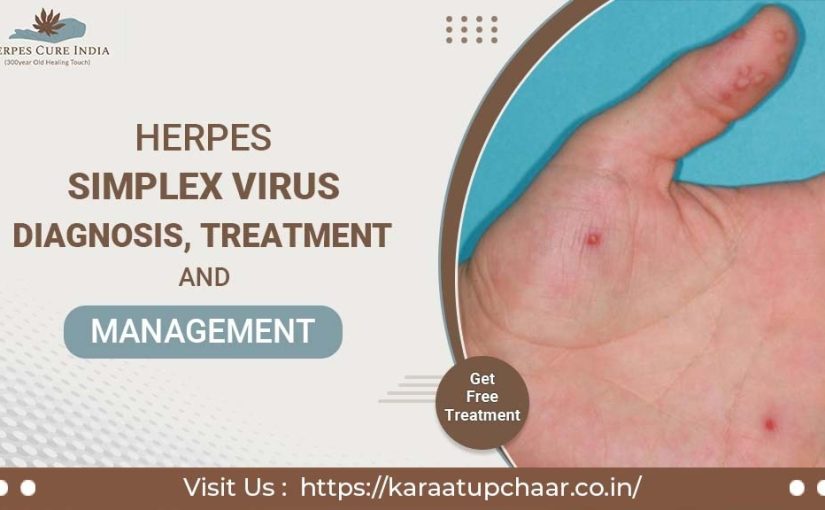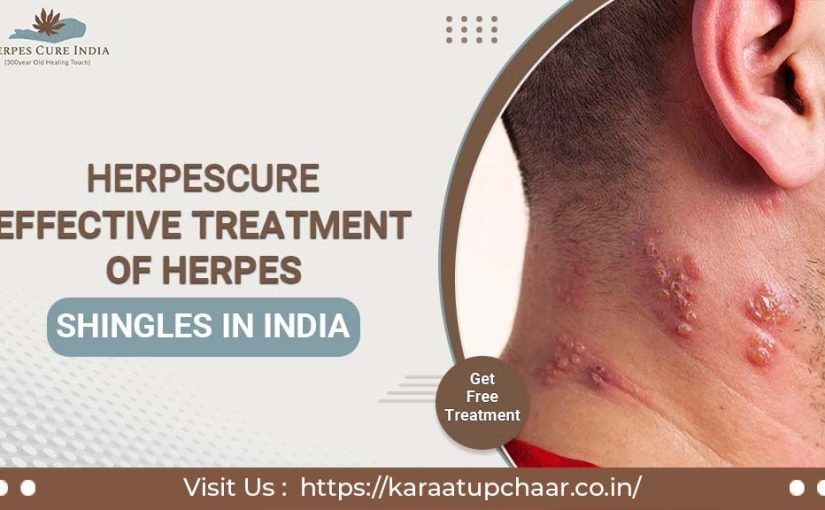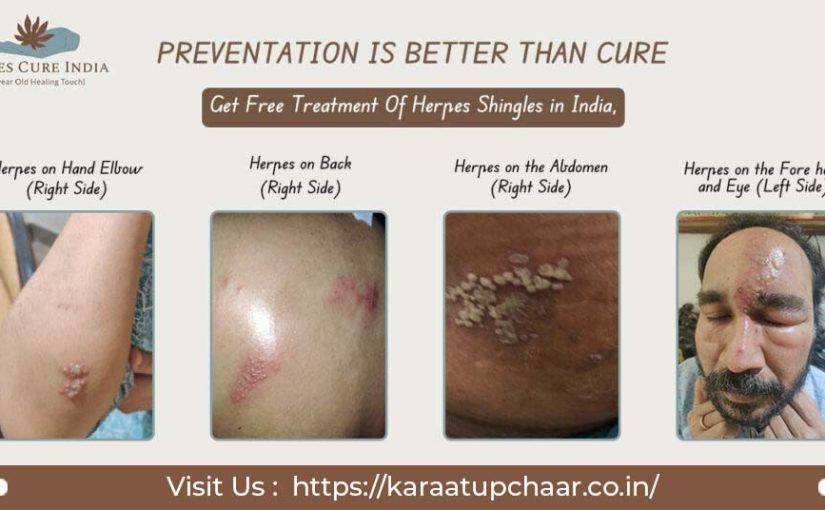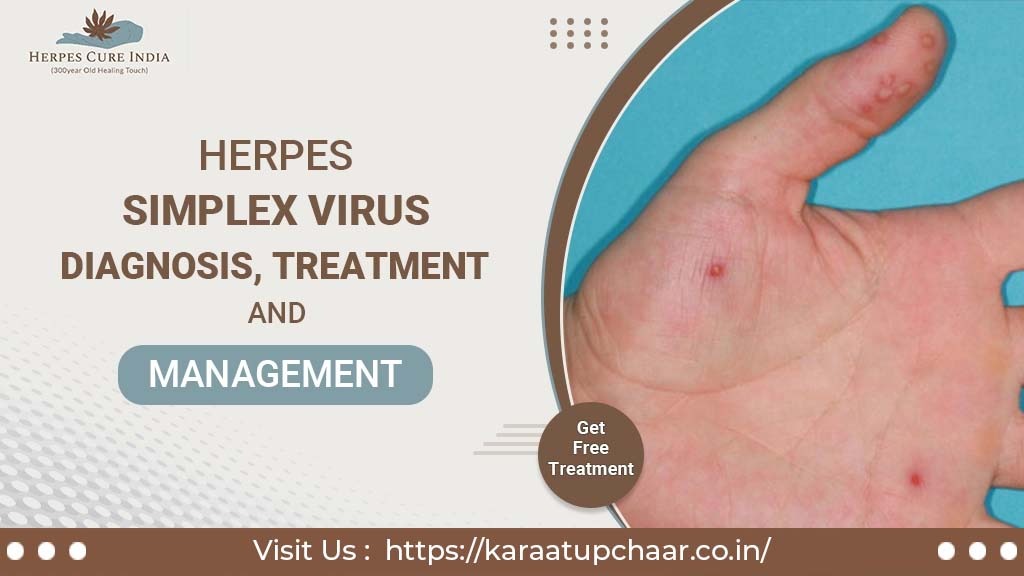
Understanding Herpes Simplex Virus Diagnosis and Treatment
Herpes simplex virus (HSV) is the causative agent of herpes infections. Oral herpes can cause cold sores on the lips or face, while genital herpes can affect the anal area, buttocks, and genital region. Shingles is another infection caused by the varicella-zoster virus, which is related to HSV. Herpes infections can also impact the eyes, skin, or other organs and are particularly dangerous for infants and those with weakened immune systems.
There are two distinct types of Herpes Simplex Virus:
Herpes simplex virus type 1 (HSV-1): Most often causes cold sores but can also lead to other conditions that require treatment.
Herpes simplex virus type 2 (HSV-2): Most commonly causes genital herpes but can also infect the mouth and other mucous membranes.
Herpes Simplex Virus Diagnosis typically involves physical examinations, laboratory tests, and possibly viral culture tests to determine the type of HSV infection and its location.
Transmission and Symptoms: How Herpes Simplex Virus Diagnosis is Made
HSV spreads through physical contact, and some people may experience no symptoms, while others develop painful sores at the point where the virus entered their bodies. Before healing, these sores turn into blisters, which can be extremely painful.
The vast majority of people experience outbreaks several times a year, though these occurrences become less frequent over time. Taking antiviral herpes medication treatment can reduce the severity and frequency of these outbreaks.
HSV-1 Treatment and Diagnosis
Oral herpes caused by HSV-1 can be diagnosed through physical examination and confirmed with lab tests if necessary. It is often transmitted through close contact with a sore, saliva, or other bodily fluids. People who come into direct contact with the affected area are at risk of contracting the virus.
Common ways HSV-1 spreads include:
- Kissing
- Oral sex
- Other forms of skin-to-skin contact
Sharing items like lip balm, razors, cups, and eating utensils is less common but still possible. The virus can survive outside the body for a few hours to a few days, but transmission through inanimate objects is rare.
HSV-2 Treatment and Diagnosis
Like HSV-1, HSV-2 (commonly associated with genital herpes) is transmitted through direct contact with herpes sores, saliva, or bodily fluids during an outbreak. Diagnosis is typically made through a combination of physical examination and lab tests.
Common ways HSV-2 spreads include:
- Kissing
- Oral sex
- Sharing sex toys
- Penetrative intercourse
- Skin-to-skin contact at the infection site
Although HSV-1 is typically associated with oral herpes and HSV-2 with genital herpes, both strains can cause either type of infection.
Recognizing the Symptoms: Key to Herpes Simplex Virus Diagnosis
Not everyone with HSV shows symptoms. Whether you have a primary infection or a recurrent one, symptoms can vary in severity.
Primary Symptoms of HSV:
After exposure, symptoms of a primary infection may appear within a few days to weeks. Early symptoms often resemble the flu and may include:
- Fever
- Swollen lymph nodes
- Body aches, such as headaches
- Fatigue
- Loss of appetite
- Localized pain at the infection site
Before blisters appear, you might feel tingling, burning, or itching at the infection site. These blisters can take up to six weeks to heal, and they remain contagious until fully healed. Sores often itch, and genital sores can make urination painful.
Recurrent Symptoms of HSV:
Recurrent symptoms are generally milder and heal more quickly as the body builds antibodies against the virus. Blisters that form during recurrent episodes may heal within days rather than weeks. Over time, symptoms become less severe, though they can still be uncomfortable.
Location of Symptoms: Crucial for Accurate Herpes Simplex Virus Diagnosis
The type and location of symptoms can help in making an accurate Herpes Simplex Virus Diagnosis. Both HSV-1 and HSV-2 can cause similar symptoms, but the location of these symptoms typically differs:
Genital HSV Infection: Pain or burning sensations during urination are common.
Oral HSV Infection: Eating spicy or acidic foods can be painful when sores are present in the mouth.
The site of oral blisters can also vary. Initial outbreaks may cause blisters on the mouth and lips, while later episodes often result in blisters along the edge of the lips.
Conclusion:
Accurate Herpes Simplex Virus Diagnosis is crucial for effective cure for Herpes Simplex and management of the infection. Whether you’re dealing with HSV-1 or HSV-2, recognizing the symptoms early and seeking appropriate medical care can help manage outbreaks and reduce their impact on your life.
For more information or to seek treatment, please contact us:
Call Us:
Raj Dulari (Hargovind Chahcha) – 9954064243
Manoj Agarwal / Sushil Agarwal (Son) – 9435115363 / 9435015362
Kamal Agarwal (Hargovind Chahcha) – 9013289821

Herpes Cure – Get Effective Treatment of Herpes Shingles in India
The primary goals of the treatment of Herpes are to relieve pain, promote rapid healing, and prevent complications. Starting antiviral treatment as soon as herpes is detected can reduce the risk of postherpetic neuralgia. Corticosteroids can help control pain and outbreaks, while other components of treatment include patient isolation and curative care of skin lesions to prevent nosocomial infection.
Antiviral Agents for the Treatment of Herpes
Antiviral medications such as acyclovir, famciclovir, and valacyclovir are commonly used in the treatment of Herpes. These drugs alleviate pain, speed up recovery, and prevent postherpetic neuralgia. Antiviral therapy should be initiated within 72 hours of the rash onset. Studies have shown that famciclovir may be more effective than valacyclovir in reducing the discomfort of acute herpes zoster. For instance, after 34 days on a 7-day famciclovir regimen, there was an early reduction in discomfort. Additionally, research has indicated that oral acyclovir and valacyclovir are not associated with a higher incidence of acute renal impairment compared to famciclovir.
Systemic Corticosteroids in the Treatment of Herpes
In certain cases, such as acute zoster pain, Ramsay Hunt syndrome, and ocular sequelae, corticosteroid therapy is recommended. Corticosteroid therapy is more effective when combined with antiviral drugs. The combination of acyclovir and corticosteroids has shown significant efficacy in the treatment of Herpes zoster in both adults and children. Early therapy with this combination also enhances hearing recovery.
For example, combining acyclovir and steroids to treat Ramsay Hunt syndrome has been shown to improve facial nerve function. Additionally, acyclovir and prednisolone treatment for herpes in people over 50 can improve their quality of life. While acyclovir and prednisolone may alleviate the rash and acute symptoms of herpes zoster, their long-term effectiveness in preventing post herpes neuralgia remains uncertain.
Effective Treatment of Herpes during Pregnancy
Herpes zoster can be treated during pregnancy with acyclovir or valacyclovir. In early pregnancy, acyclovir is considered the drug of choice (DOC) as it does not increase the risk of birth defects or preterm birth.
For instance, a 28-week pregnant woman treated with acyclovir and acetaminophen for herpes zoster neuralgia gave birth to a healthy child two months later. Another case involved a 17-week pregnant woman who responded well to valacyclovir during her Treatment of Herpes zoster.
Newborns whose mothers have varicella or herpes zoster between 5 days before and 2 days after giving birth should receive varicella-zoster immune globulin, even if the mother has had these conditions before.
Natural Home Remedies for the Treatment of Herpes
Essential Oils
Essential oils have been used for many decades for their therapeutic benefits, particularly for skin conditions. Certain essential oils contain compounds that may aid in skin healing and reduce inflammation, making them effective in the Treatment of Herpes. Some beneficial oils include:
- Chamomile essential oil
- Eucalyptus essential oil
- Tea tree essential oil
It is important to note that pure essential oils may cause allergic reactions in some individuals. Therefore, always perform a patch test before use. It’s also best to mix essential oils with a carrier oil or obtain a safe topical ointment from a pharmacy.
Cold Compresses
Applying cold compresses to the affected area can help relieve irritation and reduce swelling during the Treatment of Herpes. Soak a natural cotton cloth or towel in cold water, wring it out, and apply it to the sore, itchy areas. Repeat as necessary. It is advisable to avoid exposing the skin to extreme temperatures, such as hot showers or baths, to prevent further irritation.
Balanced Diet
A balanced diet rich in immune-boosting nutrients is essential in the treatment of Herpes. Consuming foods that are orange, red, or green, which contain carotenoids like lycopene, lutein, zeaxanthin, and provitamin A, can support immune function. Examples of such foods include:
- Orange foods: Carrots, pumpkins, and apricots.
- Red foods: Watermelon, red peppers, grapefruit, and cherries.
- Green foods: Kale, parsley, spinach, melon, lettuce, and endive.
Karaatupchaar: Expert Guidance for the Treatment of Herpes
Karaatupchaar provides a Medical Expert Board of board-certified physicians to review our articles and join us in our mission to make you confident in your health decisions. We offer free treatment of Herpes and empower you with the best answers to your most pressing questions, from understanding herpes virus infection diseases to managing new diagnoses and everything in between.
For more information or to seek treatment, please contact us:
Call Us:
Raj Dulari (Hargovind Chahcha) – 9954064243
Manoj Agarwal / Sushil Agarwal (Son) – 9435115363 / 9435015362
Kamal Agarwal (Hargovind Chahcha) – 9013289821
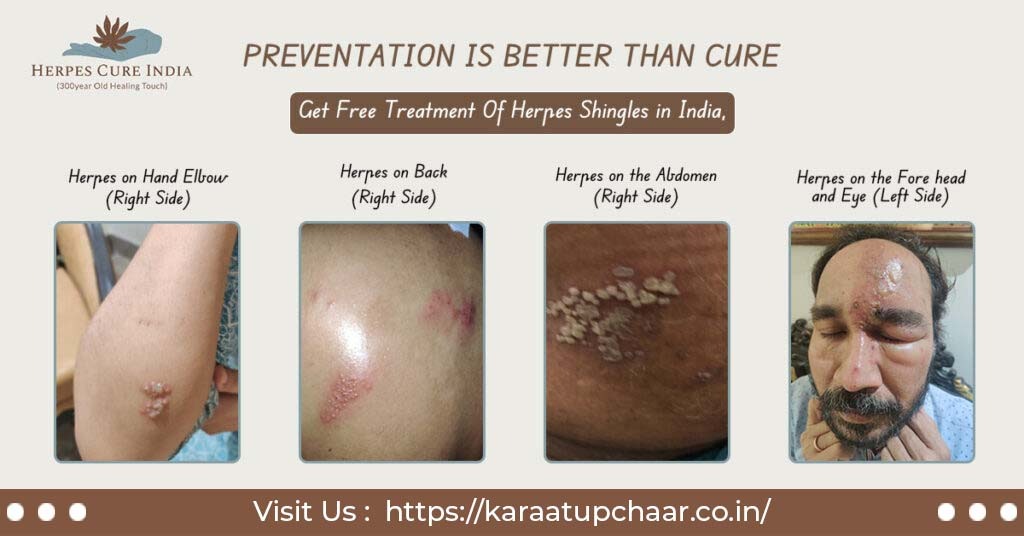
What are Herpes Shingles and Its Symptoms – Karaatupchaar
Understanding Herpes Shingles
Herpes Zoster, commonly referred to as Herpes Shingles, is a viral infection that affects the nerves and causes painful blisters on the skin. These blisters can appear anywhere on the body. Anxiety and nerve pain can persist for months after the rash clears up. The same virus that causes chickenpox is responsible for Herpes Shingles. After a person recovers from chickenpox, the virus remains dormant in the body and can reactivate years or even decades later to cause shingles. Approximately 90 percent of the population in the Indian subcontinent has had chickenpox, making them vulnerable to shingles. The risk of developing shingles increases with age, so the shingles vaccine is recommended for all healthy individuals over the age of 50. It is also recommended for people 19 and older who have weakened immune systems due to illness or treatment. Although possible, shingles in children are rare.
Who is Susceptible to Acquiring Herpes Shingles?
Those who have had chickenpox are at a higher risk of developing Herpes Shingles later in life. The likelihood of shingles increases under the following conditions:
- Weakened immune systems (e.g., individuals with cancer, HIV, organ transplant recipients, or those undergoing chemotherapy)
- People around fifty years of age or older
- Individuals who have been ill recently
- Those who have experienced trauma
- Individuals under significant stress or anxiety
After a chickenpox infection, the virus does not leave the body but instead lodges in the dorsal ganglia at the roots of the spinal nerves. Most people are unaware that the virus is still present in their bodies. The exact reason for the virus reactivating isn’t always clear, but it often happens during times of stress or when the immune system is compromised.
Symptoms of Herpes Shingles
Herpes Shingles is characterized by a red, itchy rash that typically affects only one side of the body or face at a time. Even before the rash appears, you may experience itching, burning, or tingling in the area where the rash will develop.
The impact of the infection on the nervous system can last for months or even years. The likelihood of experiencing long-term nerve pain increases with age, and the pain can be described as burning, throbbing, aching, or stinging. In some cases, Herpes Shingles may also cause conjunctivitis (pink eye) if the virus affects the eyes.
Early Symptoms of Herpes Shingles:
- Fever
- Chills
- Fatigue
- Sensitivity to light
- Uncomfortable feelings in the stomach
A few days after these initial symptoms, additional signs of Herpes Shingles may develop, such as:
- Itching or burning sensation in a localized area of the skin
- Discoloration of the affected skin
- A small, raised rash in the affected area
- Fluid-filled sores that eventually scab over
- Skin irritation ranging from mild to severe
Prevention is Better Than Cure: Get Vaccinated Against Herpes Shingles
Vaccination is the most effective way to prevent Herpes Shingles and reduce the risk of developing long-lasting pain if you do get shingles. The zoster vaccine is recommended for all healthy adults aged 50 and older, as well as individuals aged 19 and older who have compromised immunity due to disease or treatment. Even if you’ve had chickenpox before, the virus can still reactivate as shingles. Those who have had chickenpox are still eligible for the vaccine to prevent potential outbreaks. There is no specific time limit for receiving the shingles vaccine after having chickenpox, but it is generally recommended to wait until any active herpes outbreak has subsided before getting vaccinated. It’s always best to discuss the timing of vaccines with your healthcare provider.

